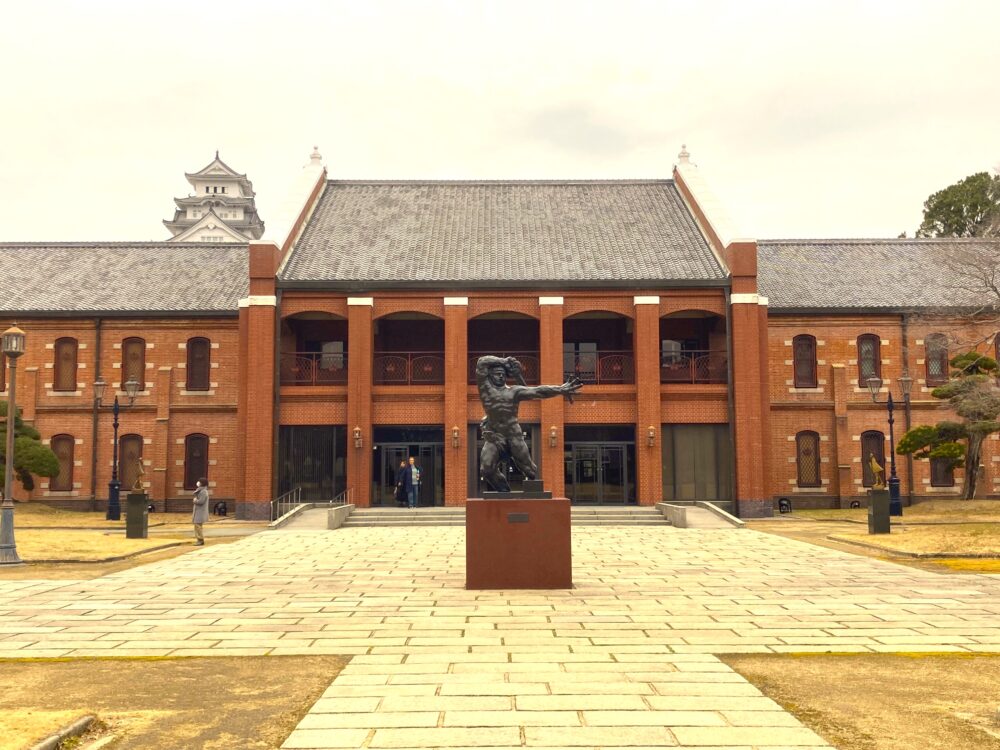
A Red-Brick Museum Full of History
The Himeji City Museum of Art is a beautiful red-brick museum located in Himeji, Hyogo Prefecture. It showcases a wide range of works from modern to contemporary Japanese and Western art. Whether you’re an art lover or an architecture fan, this spot is definitely worth a visit.
The first thing that catches your eye is the striking red-brick building itself. Originally built as a former military warehouse and clothing storehouse during the Meiji and Taisho eras, it was later renovated and turned into a museum. Thanks to its historical value, the building was registered as a Tangible Cultural Property of Japan in 2003. With its stately exterior and quiet, elegant galleries, it’s a museum where the building itself is part of the experience.
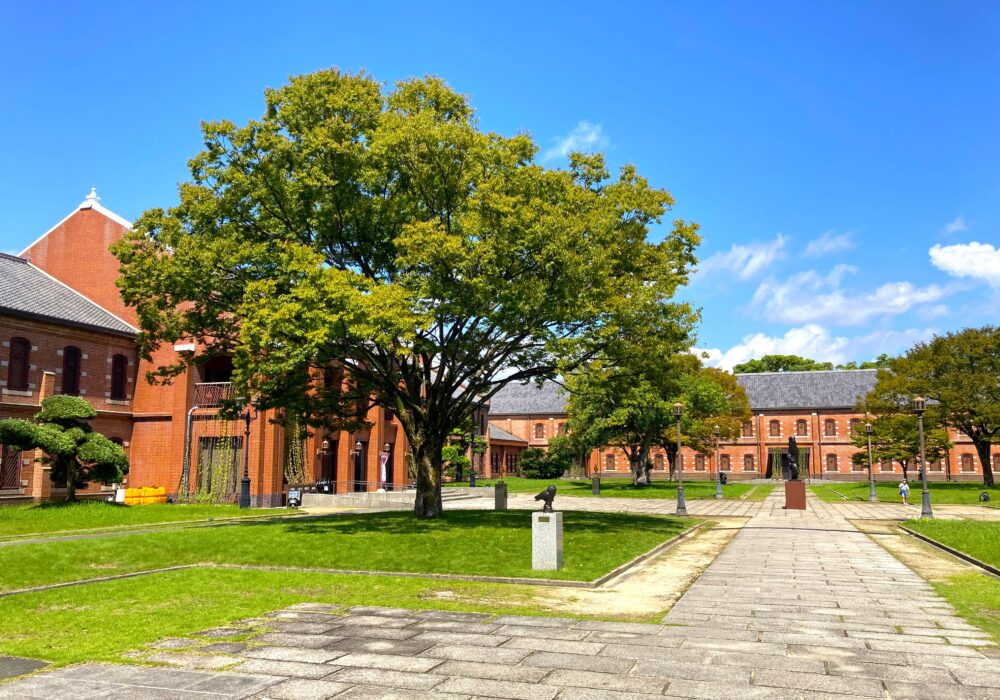
Sculptures That Shine Against the Red Bricks
In front of the museum, you’ll find a spacious garden filled with sculptures — and the best part is, you can view them for free without entering the museum.
At the center stands “The Great Warrior of Montauban” by Antoine Bourdelle, a student of Auguste Rodin. The piece radiates power — from its massive hands and strong thighs to its bold, dynamic pose. It truly captures the spirit of a warrior, and seeing it up close is breathtaking.
What makes this outdoor display special is how freely you can enjoy the works. Step back to take in the whole scene, or walk around and look up from different angles — the sculptures change with the light, the weather, and the time of day. Every visit offers something new.
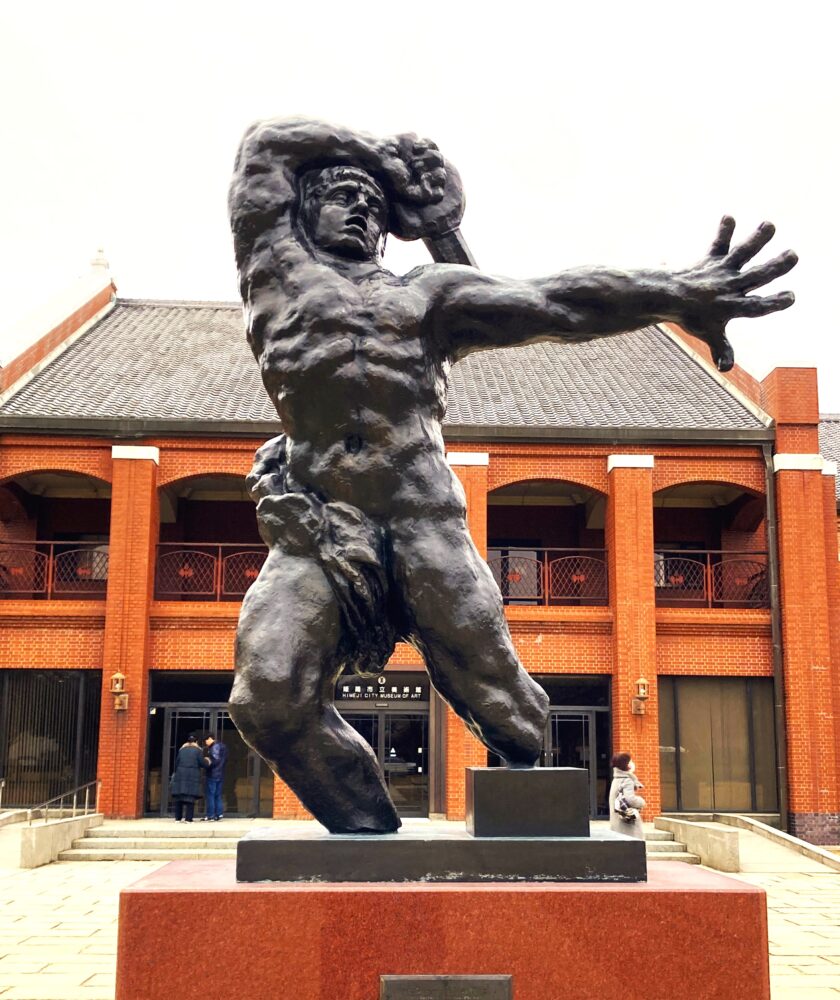
A Perfect Spot Inside Himeji Park
Another big draw of the museum is its location. The Himeji City Museum of Art sits inside Himeji Park, right next to the UNESCO World Heritage Site — Himeji Castle. From the museum grounds, you can even catch a close-up view of the castle’s brilliant white keep.
After enjoying the art, take a relaxing walk through the park and continue on to Himeji Castle. It’s one of the best ways to spend a calm afternoon in the city.
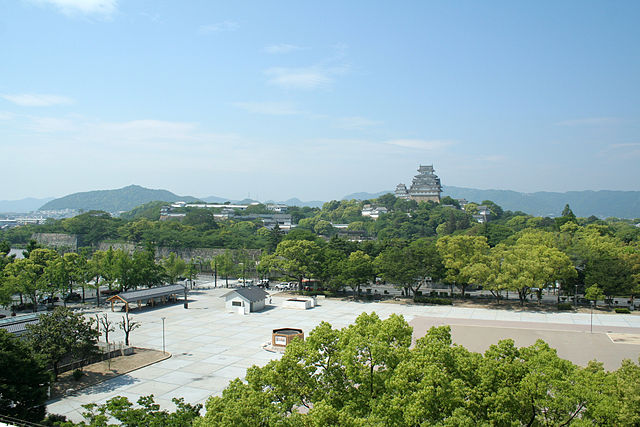
img: by Corpse Reviver
Featured Collection
Inside the museum, visitors can explore the Kunitomi Collection, a permanent exhibition donated by Keizo Kunitomi, a businessman from Himeji. The collection focuses on modern French paintings, showcasing masterpieces that trace the evolution of Western art from the 19th century onward.
Among its 50 works, about 30 are on display at any given time, allowing visitors to enjoy a rotating selection of landscapes and portraits by some of France’s most celebrated painters.
Camille Corot
“The Lake” (ca.1860)

About This Work (Tap or Click to View)
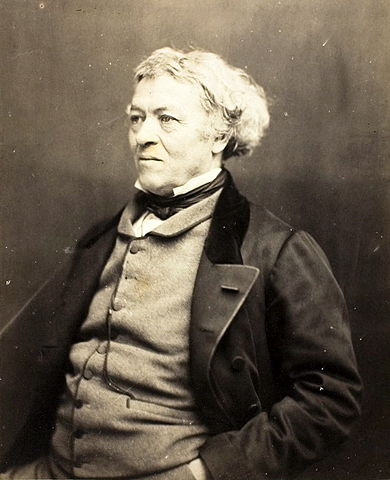
Camille Corot was a leading figure of the Barbizon School, a group of French painters who turned to nature for inspiration before the rise of Impressionism. Corot’s serene landscapes, filled with soft light and poetic atmosphere, had a profound influence on later artists like Monet and Pissarro.
Corot painted The Lake late in his career. It depicts trees along a quiet lakeshore, with a small town faintly visible beyond. The soft, hazy brushwork and gentle light give the scene a dreamlike quality — as if you’re looking at a memory rather than a real place.
While Corot’s early works were more realistic, he gradually shifted toward a style that emphasized light and air over detail. His delicate, silvery tones — often called “Corot gray” — create a tranquil mood that still resonates with viewers today.
A true gem of the museum’s collection, this piece captures the timeless calm and subtle beauty that define Corot’s later art.
Gustave Courbet
“The Wave” (ca. 1870)
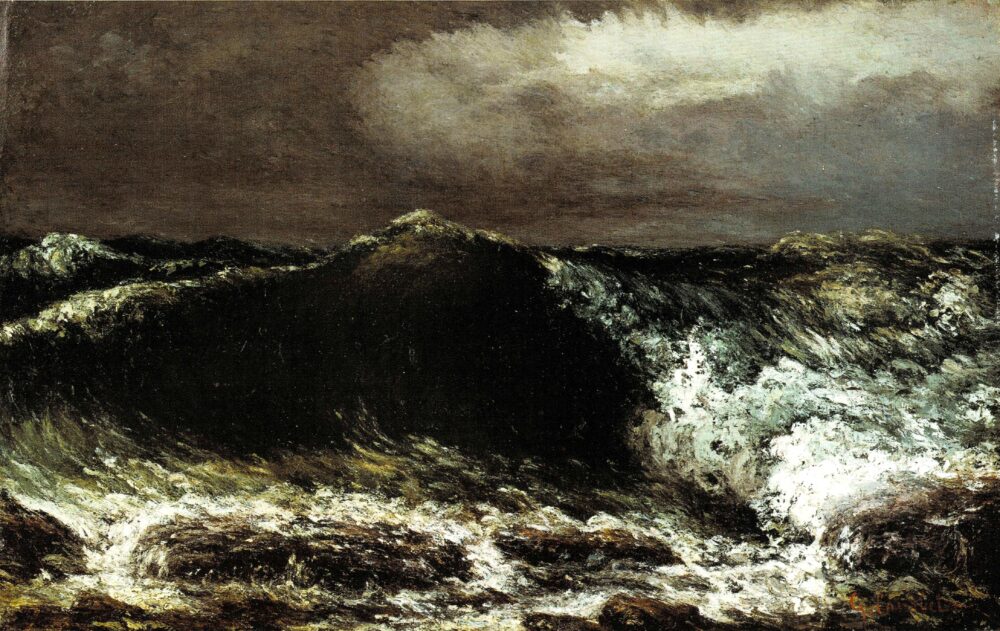
About This Work (Tap or Click to View)
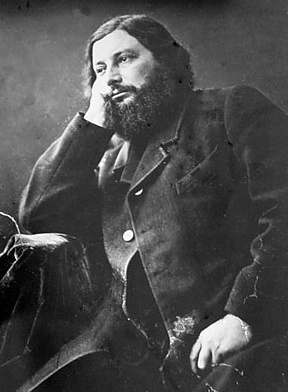
Gustave Courbet was a pioneering French painter and a central figure of Realism, a movement that rejected idealized subjects in favor of portraying the world as it truly is. Throughout his career, Courbet painted landscapes, portraits, and scenes of everyday life — but in his later years, he became especially fascinated by the sea.
Courbet began painting seascapes in the late 1860s and went on to create more than 100 of them. His marine paintings range from calm, reflective waters to powerful crashing waves like the one captured in The Wave.
Here, Courbet’s bold brushstrokes make you almost hear the roar of the surf. The painting radiates raw energy — a direct expression of nature’s untamed force. Courbet never followed fashionable styles like Romanticism or Neoclassicism; instead, he focused on “painting reality as it is.”
In The Wave, that philosophy comes alive. Each swell and ripple seems to shift from moment to moment, capturing the fleeting, ever-changing beauty of the sea. It’s a stunning example of Courbet’s dedication to realism — and his deep respect for nature’s power.
Adolphe Monticelli
“Gathering in Front of a Mosque” (ca.1860–1870)
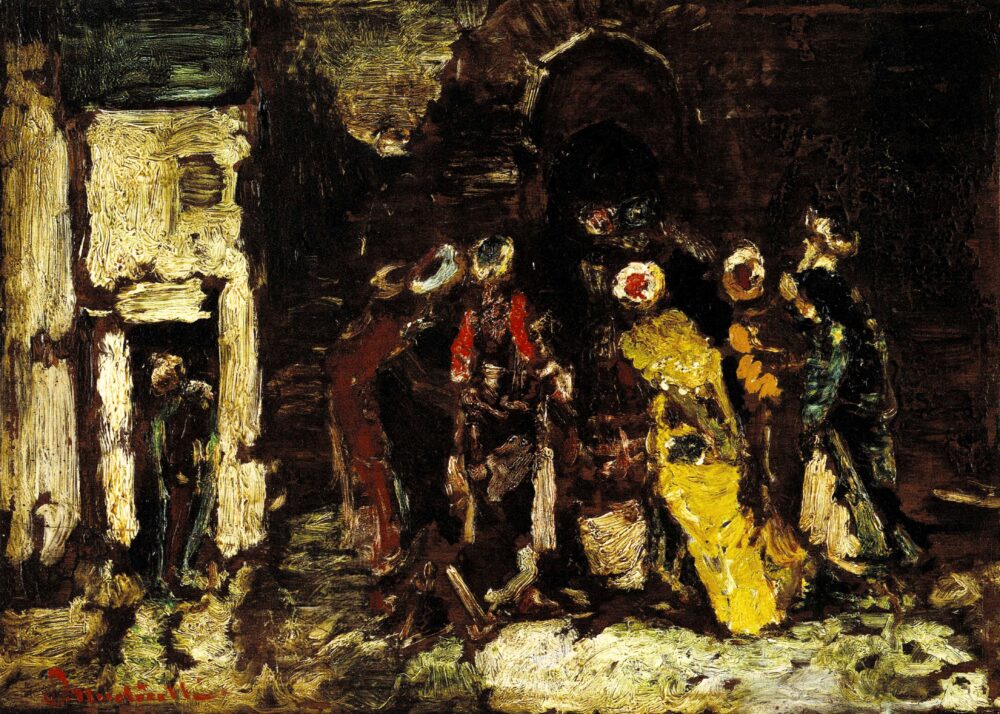
About This Work (Tap or Click to View)
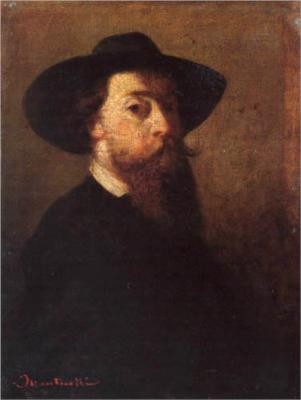
Adolphe Monticelli was a French painter whose bold and colorful style had a strong influence on Vincent van Gogh. Though less known to the general public today, Monticelli was an artist far ahead of his time.
His works are instantly recognizable for their rich colors, thick impasto, and decorative flair. Influenced by Romanticism, Monticelli applied paint so heavily it seemed almost sculpted onto the surface — a technique that later inspired Post-Impressionist and Fauvist painters.
In Gathering in Front of a Mosque, Monticelli depicts a group of figures gathered before an Islamic-style building. The forms of the people and architecture are only loosely defined, yet that soft vagueness gives the painting its dreamlike atmosphere.
The layered paint catches light in different ways, creating a vivid texture and rhythm across the surface. The result is both mysterious and mesmerizing — a scene that feels less like a record of reality and more like a fleeting vision from a dream.
Claude Monet
“Sunset at Petit-Gennevilliers” (1874)
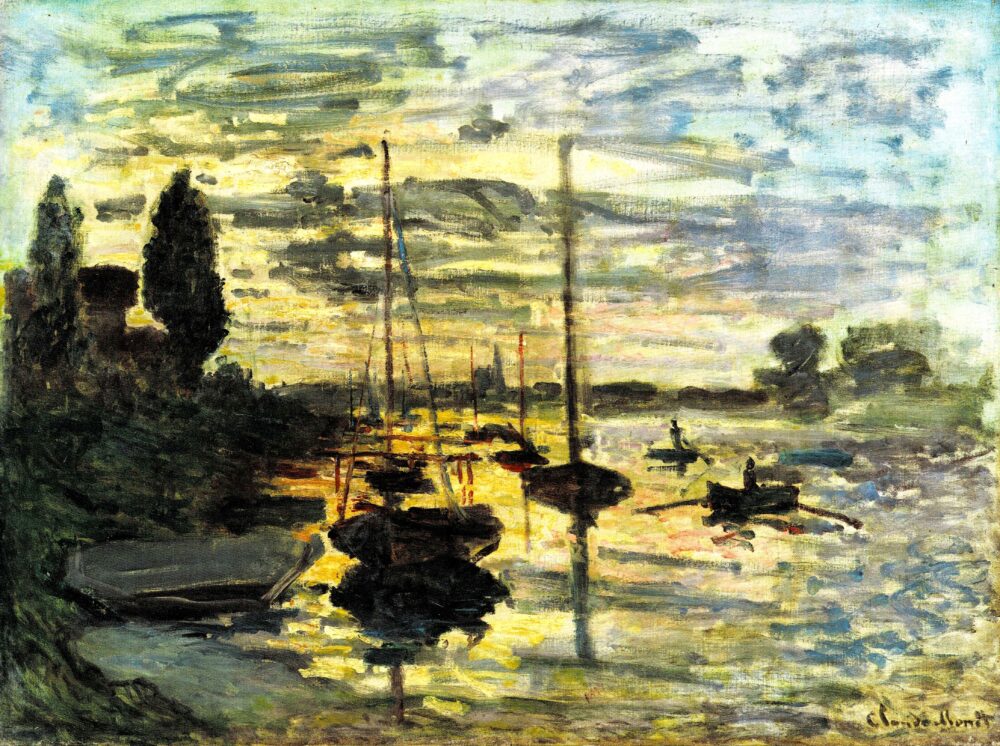
About This Work (Tap or Click to View)
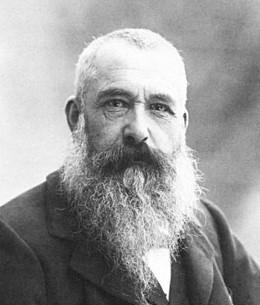
Claude Monet was one of the leading figures of Impressionism, the art movement that changed the way we see light, color, and nature.
In this serene painting, a few sailboats float gently on the Seine River at sunset. Monet painted it while living in Argenteuil, a town just outside Paris where he spent much of the early 1870s. The scene across the river — Petit-Gennevilliers — was a favorite subject of his during this time.
Here, Monet captures the fleeting beauty of light: dark clouds tinged with gold, the glowing sun slipping below the horizon, and shimmering reflections rippling across the water. It feels as if he painted the moment directly from memory — before it disappeared.
The year 1874 was also when Monet exhibited his now-famous Impression, Sunrise (Impression, soleil levant) — the painting that gave Impressionism its name. Though critics dismissed the style at first, Monet continued to explore the play of light and color that would later make him one of the most beloved artists in the world.
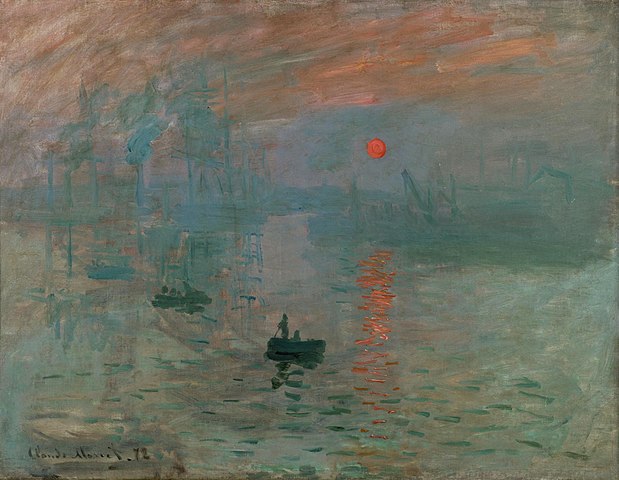
Camille Pissarro
“Blossoming Plum Tree” (1889)
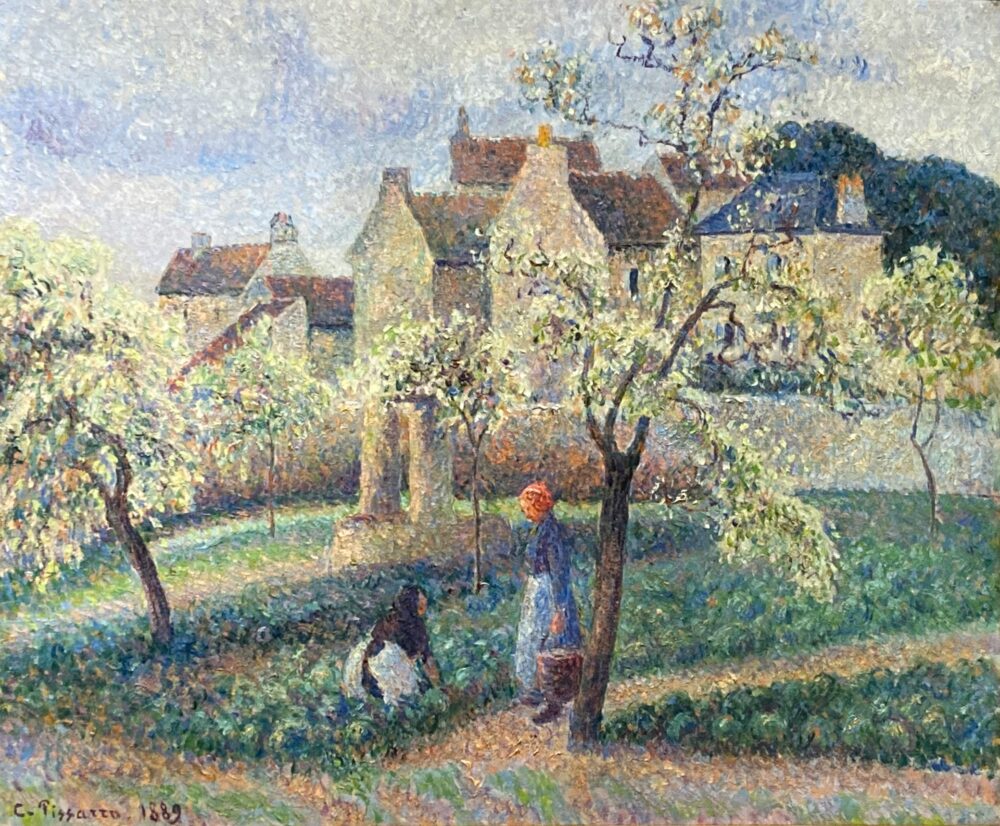
About This Work (Tap or Click to View)
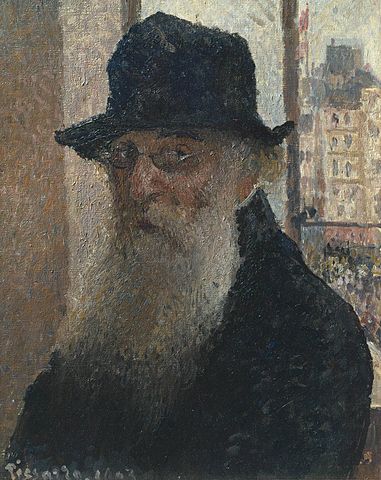
Camille Pissarro was one of the most respected members of the Impressionist movement — often described as its gentle and steady heart. He was the only artist to exhibit in all eight Impressionist exhibitions, and he was known for his warmth, kindness, and openness toward younger painters.
Painted in his later years, Blossoming Plum Tree shows a flowering plum bathed in soft spring light. The painting is done using pointillism, a technique developed by the next generation of artists such as Georges Seurat and Paul Signac.
Pissarro was deeply curious about new artistic ideas. Though he was the oldest among his Impressionist peers, he eagerly experimented with this “scientific” method of placing tiny dots of pure color side by side to create luminous effects.
In this work, you can see how those delicate dots bring the scene to life — touches of pale blue along a reddish path, hints of orange glowing in the sky. The use of complementary colors makes the whole canvas vibrate with light and freshness.
While some of his friends like Monet and Renoir were skeptical of pointillism, Pissarro embraced it with enthusiasm, combining it with his own gentle touch. The result is a painting that perfectly captures both the warmth of spring and the spirit of artistic curiosity.
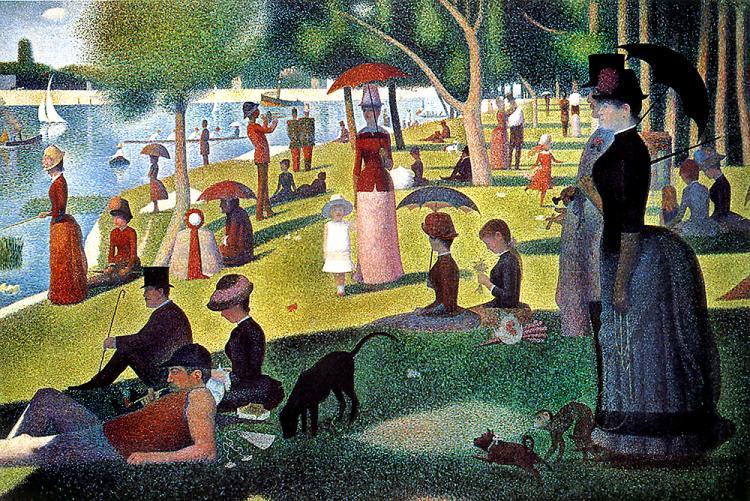
Edgar Degas
“Nude Woman in the Bath” (ca. 1882–1883)
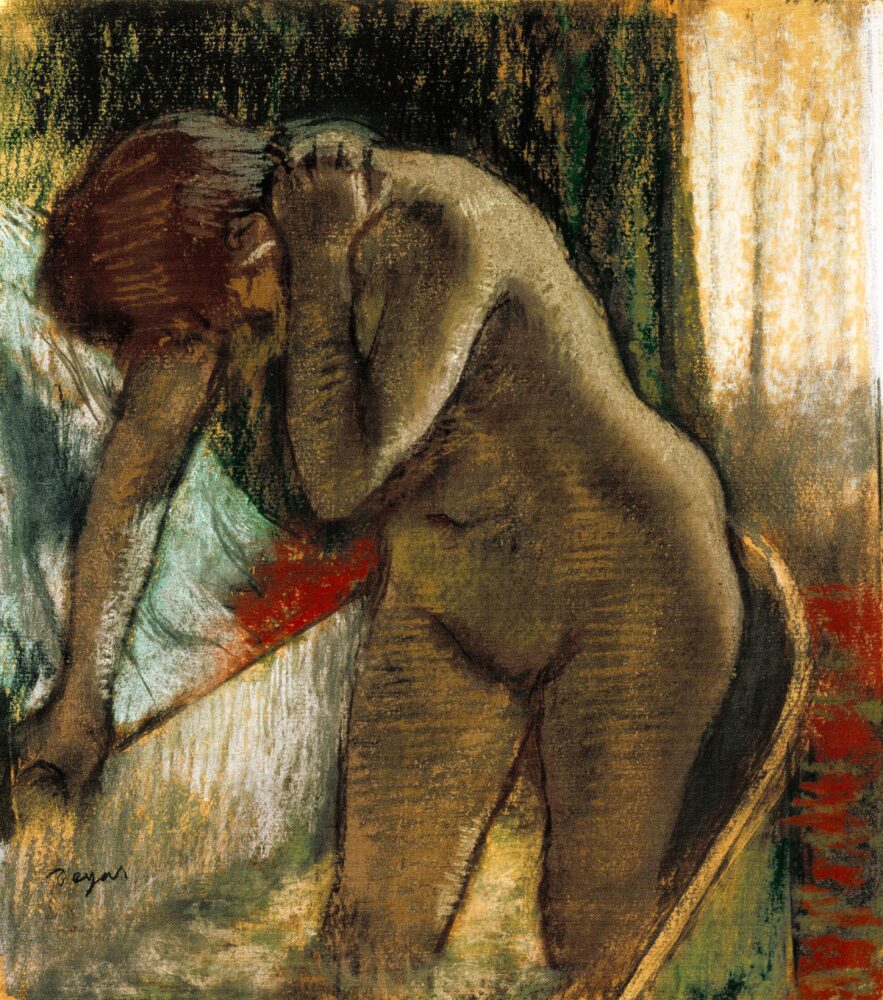
About This Work (Tap or Click to View)
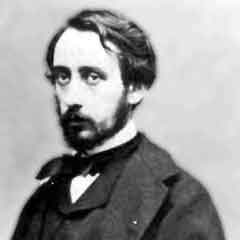
Edgar Degas is best known for his graceful paintings of ballet dancers, but he also explored a more intimate theme throughout his career — women bathing. Nude Woman in the Bath is part of that series, created using one of Degas’s most unusual techniques.
The piece was made using a monotype, a type of print in which an image is painted directly onto a metal plate, then transferred to paper — producing only one unique impression. It’s more like a single-use print or a “painted stamp” than a traditional printmaking process.
In this work, Degas pulled a second, lighter print from the same plate — the faint leftover ink from the first impression — and then added color with pastel on top. The first, stronger impression of this same image is now held at the Art Institute of Chicago.
Degas often used this method in his later years, partly because it allowed him to work quickly. After his father’s death, Degas faced heavy family debts and produced many works during this financially difficult period.
But his fascination with monotype wasn’t just practical. At a time when lithographs and etchings allowed for easy reproduction, Degas deliberately chose a one-of-a-kind process — a sign of his deep personal attachment to experimentation and the expressive potential of the medium.
Despite its bold composition and color, Nude Woman in the Bath has a quiet, introspective mood. It perfectly reflects Degas’s mix of technical innovation, emotional restraint, and sharp observation.
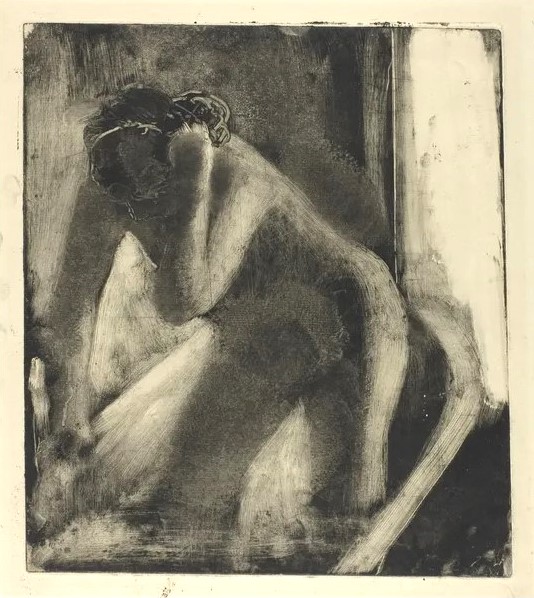
Frank Brangwyn
“Morning Market in Venice” (1925)
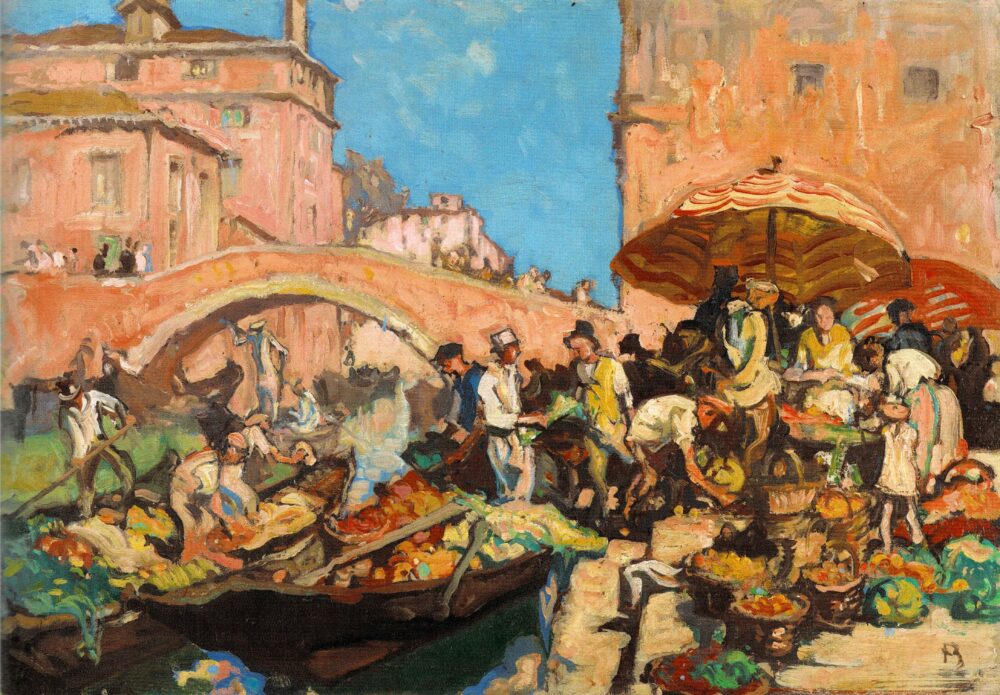
About This Work (Tap or Click to View)
Frank Brangwyn (1867–1956) was a British artist of Welsh and Belgian heritage — a painter, printmaker, and designer known for his bold, energetic style. Active from the late 19th to early 20th century, Brangwyn absorbed influences from Impressionism, Art Nouveau, and Symbolism, yet developed a look entirely his own.
Morning Market in Venice captures the vibrancy of a Venetian street scene, but with a twist. Rather than focusing on realistic detail, Brangwyn infuses the view with an exotic, almost Oriental atmosphere, reflecting his travels to places like Turkey and North Africa.
The pink tones of the walls are especially striking — a vivid, almost fluorescent hue that only Brangwyn could pull off. Set against the soft blue of the sky, the colors create a brilliant visual harmony that makes the entire scene glow with life.
His rich sense of color may have been shaped by memories of his travels — perhaps by the reddish sands of African deserts or the warm tones of southern sunlight. Whatever the source, the result is pure Brangwyn: dynamic, colorful, and full of movement.
Himeji City Museum of Art — Visitor Information
Location: 68-25 Honmachi, Himeji City, Hyogo Prefecture, Japan


Comments